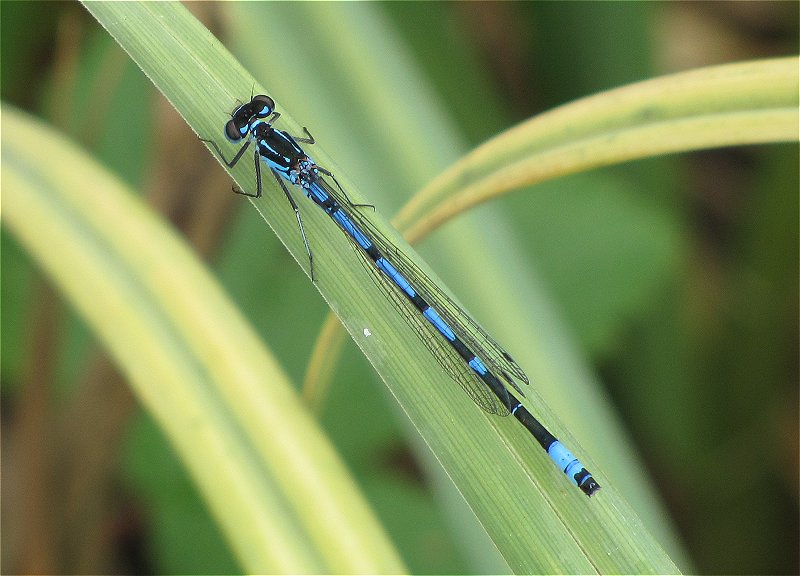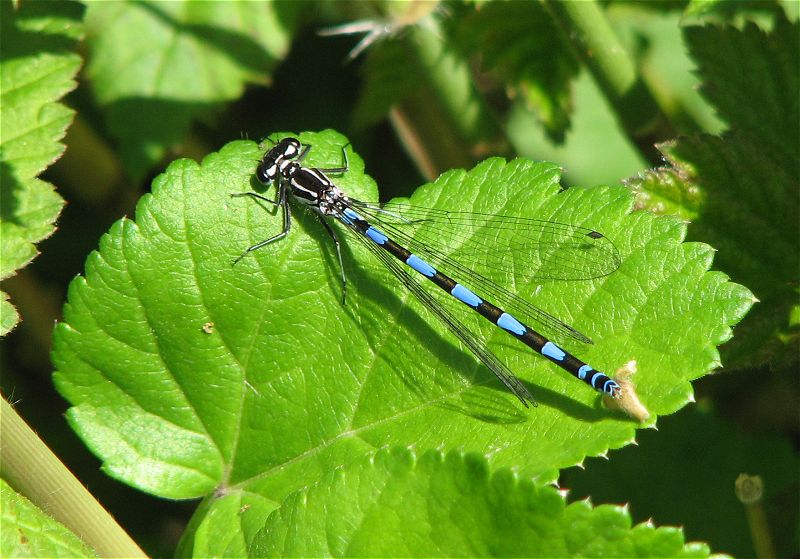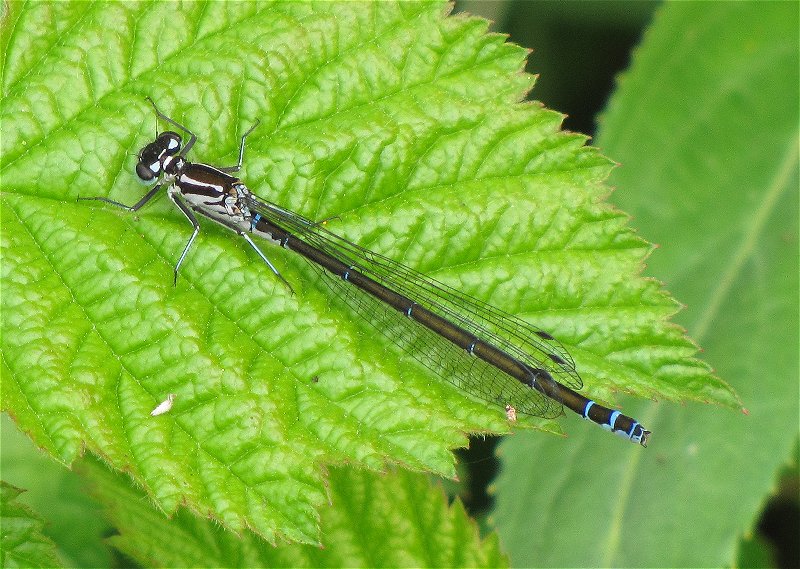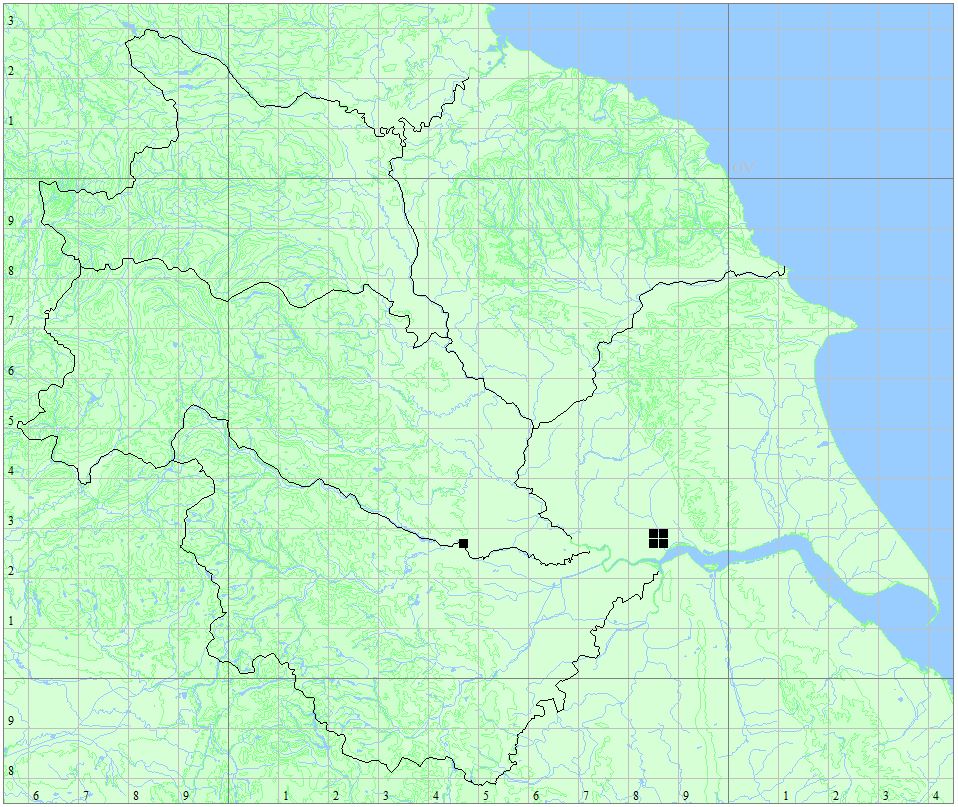<-Previous Species – Next Species->
Length
23-30mm; Wingspan: Male 42mm; Female 42mm; Hindwing 16-23mm
Male
Coenagrion Spur’ on side of thorax, also present on Azure Damselfly, but absent on Common Blue Damselfly. Antehumeral stripes are usually broken, sometimes they can be absent or complete. Wine glass marking on segment two of the abdomen. Segment nine contains a square with three points (three pointed crown). Overall appears more slender and darker than the similar Azure Damselfly. Can be confirmed by the strongly trilobate margins of the pronotum.
Female
‘Coenagrion Spur’ on side of thorax, also present on Azure Damselfly, but absent on Common Blue Damselfly. Antehumeral stripes are usually complete. Black thistle shape on segment two. Blue form, blue on top of the abdomen. Dark form, similar to Azure Damselfly is not as numerous. Overall appears bluer than the similar Azure Damselfly.
Note: The shape of the pronotum is the only conclusive way to seperate this species from Azure Damselfly. Personal observations have highlighted that female Variable Damselflies have a bar between the eye spots, which is absent in Azure Damselfly.
Behaviour
Males are none territorial. Copulation last around 10-15 minutes. Once copulation has taken place the pair will oviposit in tandem, into stems of floating water plants, or remains of rushes and common reed. The larvae develop in one year living among submerged vegetation.
Habitat
Fens, ponds, lakes, slow-flowing dykes, canals and peaty pools. Dependant on plenty of emergent vegetation. After emergence, tenerals require sheltered areas to mature, often being found in adjacent grasslands and in the lee of shrubbery and hedgerows.
Flight Period
Status
After a tentative report in 2006, now confirmed as being present in East Yorkshire. Currently restricted to the Broomfleet Washlands complex. This is currently the only species present in Yorkshire that is of national importance due to its near threatened status.



